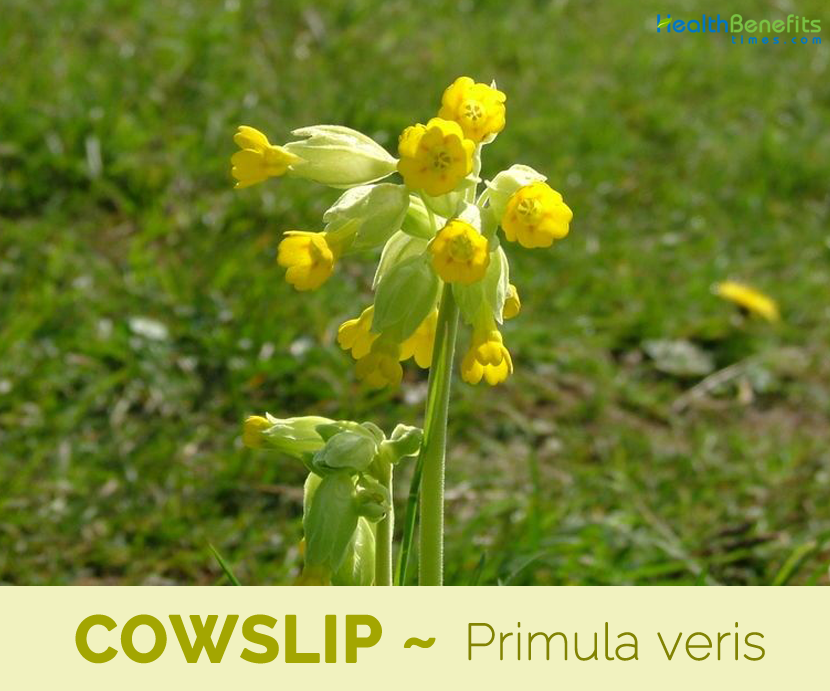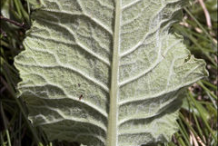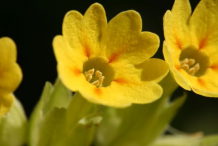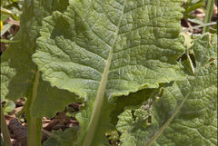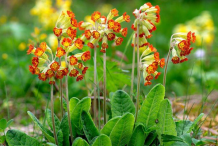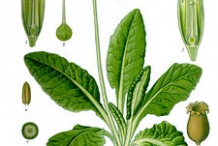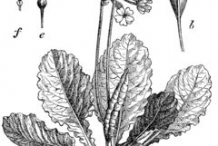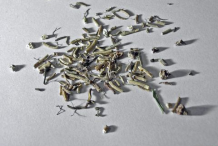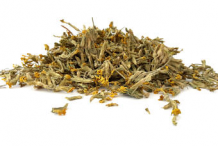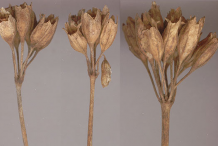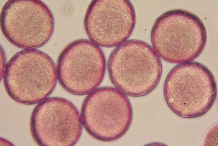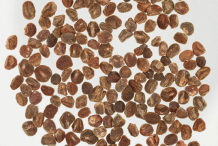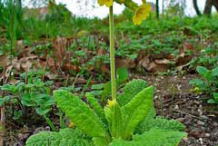The common name cowslip may derive from the old English for cow dung, probably because the plant was often found growing amongst the manure in cow pastures. An alternative derivation simply refers to slippery or boggy ground; again, a typical habitat for this plant. Genus name comes from the contraction of the medieval name primula veris for the daisy, meaning “firstling of spring”. It can be a beautiful addition to any herb garden or ornamental garden due to its beautiful yellow flowers which also contain medicine and may be made into syrup for medicinal purposes. It can be planted alongside other ornamental herbs such as daffodils, periwinkle, roses, poppy, cornflower, amaranth, white and red carnation as well as iris.
Plant Description
Cowslip is a variable evergreen or semi-evergreen perennial plant with a short sturdy rhizome that grows about 25 cm (10 in) tall and broad. The plant is found growing in well-drained, herb-rich grasslands, and may occasionally occur in scrub or woodland edges or rides, on seasonally flooded areas, and on calcareous cliffs. It prefers deep, moist, humusy, organically rich soils. Leaves are 5–15 cm long and 2–6 cm broad oblong or oval shaped and finely bristled leaves that form a rosette at the base of the plant. The upper side of the leaf is glabrous. Deep yellow flowers are produced in spring, in clusters of 10-30 blooms together on a single stem. Each flower is 9–15 mm broad. Flowerings normally take place from Apr to May. Fruit is an oval capsule with 1.5 to 2.5 mm-long brown, warty seeds. Seeds ripen in July-August.
Traditional uses and benefits of Cowslip
- They have a very long history of medicinal use and have been particularly useful in treating conditions involving spasms, cramps, paralysis and rheumatic pains.
- Flowers and the leaves are anodyne, diaphoretic, diuretic and expectorant.
- Yellow corolla of the flower is suggested for treating over-activity and sleeplessness, especially in children.
- They are possibly valuable in the treatment of asthma and other allergic conditions.
- Root has been dried and made into a powder then used as a sternutatory.
- Root is also mildly diuretic, antirheumatic and slows the clotting of blood.
- It is used in the treatment of chronic coughs (especially those associated with chronic bronchitis and catarrhal congestion), flu and other febrile conditions.
- Homeopathic remedy is made from the plant.
- It is used in the treatment of kidney complaints and catarrh.
- Many folk remedies have used cowslip to reduce blood clotting and for rheumatic diseases like rheumatic arthritis and gout.
- It has also been helpful as an herbal treatment for infections of the urinary tract and kidney complaints.
- An infusion can be made using dried Cowslip flowers over which boiling water is poured. It is left to infuse for ten minutes and then drunk as a treatment for colds.
- Cowslip roots can be mixed with water and then boiled and set aside to cool. The resulting decoction is consumed on cooling and is beneficial to the heart and the circulatory system.
- Cowslip syrup can be made by mixing the crushed flowers with honey and water. This home remedy is used in cases of breathing disorders like asthma and to treat coughs.
- Cowslip flowers soaked in white wine is supposed to be of great benefit to the heart.
- It is said to be useful in treating acne, pimples, and other skin blemishes.
- In Europe, it has been an effective calming beverage for problems related to nerves and anxiety.
- Flowers are thought to be a milder sedative and are used to calm children and help them sleep.
- Cowslip roots are expectorant, and can be used to treat common cold and flu-like symptoms.
- Cowslip has been used in folk remedies to reduce blood clotting and is sometimes used as an anti-rheumatic.
- It is widely used for whooping-cough in Europe.
- It is useful in treating epilepsy, tremors, and may even be developed as a treatment for Parkinson’s disease.
- This herb has often been used as an herbal alternative in treating kidney complaints and urinary tract infections.
- Flower petals are used to prevent or relieve spasms or convulsions, and as a sedative useful for treating hyperactivity and sleeplessness in children.
- Oil made from chopped flowers can be used externally to treat bruising.
Ayurvedic Health benefits of Cowslip
- Cervicitis: Boil 10-12 flowers of cowslip in a liter of water for 15 minutes on a low flame. Let it cool. Use it to wash vagina from outside and inside. If possible sit in this water for 15 minutes. Do it till the problem persists.
- Allergy: Prepare a concoction of Elder flower, sheep sorrel, Cowslip, Vervain, Gentian root. Take it two times a day.
Culinary uses
- Cowslip leaves have been traditionally used in Spanish cooking as a salad green.
- Uses in English cookery include using the flowers to flavor country wine and vinegars; sugaring to be a sweet or eaten as part of a composed salad while the juice of the cowslip is used to prepare tansy for frying.
- Its flowers are being used as a coloring agent in desserts.
- Young leaves used raw or cooked in soups etc.
- The fresh or dried leaves are used as a tea substitute.
- Flowers raw, cooked or used in conserves, as a garnish etc.
- Flower makes an ornamental addition to the salad bowl.
- Flowers are used to make a tasty wine with sedative and nervine properties.
Available forms
Infusion
Infusion of cowslip flowers is made from a spoonful of dried flowers over which a cup of boiling water is poured. It is then left to infuse for 10 minutes after which it is consumed and is effective against colds.
Decoct
Decoct from cowslip roots is prepared by putting a spoonful of roots in a cup of water. The mixture is then left to boil and then set aside. After cooling it is consumed, bearing in mind that the mixture is strengthening for the heart.
Cowslip Syrup
Cowslip syrup is suggested in cases of breathing disorders and is obtained from crushed flowers mixed with honey and water.
Cowslip tea
Cowslip tea is used against insomnias and is obtained from 50 g of cowslip herb, 25 g of lavender flowers, 10 g of St. John’s wort herb, and 15 g of hop plant. A spoonful of the above mentioned quantities is mixed in 0.25 liters of water and is let to sit for 3 minutes. The tea is consumed very warm in small gulps.
Boiled mixture of cowslip roots
Boiled mixture of cowslip roots is a great cure for kidney problems. The tea is obtained from 50g cowslip, 50g common elder, 15 g nettle leaves, and 15 g dandelion roots. A spoonful of these quantities is mixed in 0.25 liters of water. After that, the mixture is left to boil and to sit for 3 minutes. Two cups should be consumed throughout the day.
Cowslip wine
Cowslip wine is prepared from 2 liters of fresh flowers in a bottle of water, on top of which white wine is poured. The flowers must be covered. The bottle (covered with a cork) is then let to sit for 14 days in the sunlight. In treating heart diseases it is recommended that the wine be consumed each day 3 to 4 spoonfuls.nn
Cowslip Herbal Tea
Preparing the Tea
- Bring 1 cup of water to a boil in a pot.
- Add 1 teaspoon of loose cowslip flower and stem mix.
- Boil for 3 more minutes, and then allow cooling for 3 minutes.
- Strain the tea and drink when it has cooled down enough.
Directions
- Drink 2-3 cups daily.
Precautions
- Some people are allergic to the stamens of this plant, though such cases are easily treated.
- Saponins may cause hypotension.
- Excessive/prolonged use may interfere with high blood pressure treatments.
- Possible Gastrointestinal irritation.
- It should not be recommended for pregnant women, breastfeeding women, patients who are sensitive to aspirin, or those taking anti-coagulant drugs such as warfarin.
- It may cause vomiting and Diarrhea.
- Overdose of cowslip root lead to queasiness, nausea, gastric complaints and diarrhea.
References:
https://plants.usda.gov/core/profile?symbol=PRVE2
https://www.itis.gov/servlet/SingleRpt/SingleRpt?search_topic=TSN&search_value=24035#null
http://davesgarden.com/guides/pf/go/1092/
http://www.pfaf.org/user/Plant.aspx?LatinName=Primula+veris
http://www.botanical.com/botanical/mgmh/c/cowsl112.html
https://en.wikipedia.org/wiki/Primula_veris
https://nutrawiki.org/primula-veris-extract/
Comments
| Cowslip Quick Facts | |
|---|---|
| Name: | Cowslip |
| Scientific Name: | Primula veris |
| Origin | Western Asia and Europe |
| Colors | Oval capsule |
| Taste | Sweet, bitter |
| Name | Cowslip |
|---|---|
| Scientific Name | Primula veris |
| Native | Western Asia and Europe |
| Common Names | Arthritica, Buckles, Butter rose, Crewel, Cuy lippe, Drelip, Fairy cups, Herb peter, Key of heaven, Key flower, Mayflower, Our Lady’s keys, Paigle, Pasywort, Password, Peagle, Peggle, Petty mulleins, Plumrocks, Printemps, Promrose, Primula, Primular officinalis, Tittypines |
| Name in Other Languages | Afrikaans: Gulden Albanian: Cowslip Arabic: Zahr alhaql (زهر الحقل) Armenian: Cowslip Azerbaijani: Cowslip Basque: Cowslip Belarusian: першацвет Bengali: Gōcāraṇabhūmitē gajānō haluda raṅēra phulagācha (গোচারণভূমিতে গজানো হলুদ রঙের ফুলগাছ) Bosnian: Jagorčevina Bulgarian: Iglika (иглика) Catalan: Prímula Cebuano: Cowslip Chichewa: Cowslip Chinese: Huánghuā jiǔ lún cǎo (黄花九轮草) Croatian: Cowslip Czech: Petrklíč Danish: Kodriver Dutch: Gulden sleutelbloem English: Bunch of Keys, Cowslip, cowslip primrose, Paigle, Palsywort Esperanto: Cowslip Estonian: Nurmenukk Filipino: Cowslip Finnish: Kevätesikko French: Coucou, Primevère officinale, Brérelle, Primevère du printemps Galician: Primavera German: Frühlings-Schlüsselblume, Primel Georgian: Cowslip Gujarati: Cowslip Greek: Paschalítsa (πασχαλίτσα) Haitian Creole: Primvèr Hausa: Cowslip Hebrew: בכור- אביב Hindi: Gaavazabaan (गावज़बान) Hmong: Cowslip Hungarian: Kankalin Icelandic: Cowslip Igbo: Cowslip Irish: Bainne Bó Bleachtáin Italian: Primavera, Primula odorosa Indonesian: Cowslip Javanese: Cowslip Japanese: 立金花 Kannada: Cowslip Kazakh: Cowslip Khmer: Cowslip Korean: Cowslip, eulo (으로) Lao: Cowslip Latin: Cowslip Latvian: Prīmula Lithuanian: Raktažolė Macedonian: Cowslip Maltese: Cowslip Malayalam: Cowslip Malagasy: Cowslip Malay: Cowslip Maori: Cowslip Marathi: Pivaḷī sugandhī phulē asalēlē ēka phulajhāḍa (पिवळी सुगंधी फुले असलेले एक फुलझाड) Mongolian: Cowslip Myanmar (Burmese): Cowslip Nepali: Cowslip Norwegian: Cowslip Persian: نوعی پامچال Polish: Cowslip Portuguese: Primavera Romanian: Ciuboțica-cucului Russian: первоцвет Serbian: Цовслип Sesotho: Cowslip Somali: Cowslip Swahili: Cowslip Slovak: Prvosienka Slovenian: Jegličev Spanish: Bellorita, primavera, prímula Swedish: Gullviva, cowslip Sinhala: Cowslip Tajik: Cowslip Tamil: Kiḻippar (கிழிப்பர்) Telugu: Cowslip Thai: Mị̂ chnid h̄nụ̀ng (ไม้ชนิดหนึ่ง) Turkish Cuhaçiçeği Ukrainian: первоцвіт Urdu: Cowslip Uzbek: Cowslip Vietnamese: Cây ngọc trâm hoa Welsh: Briallu Mair Yiddish: Kovslip (קאָווסליפּ) Yoruba: Cowslip Zulu: Cowslip |
| Plant Growth Habit | Variable evergreen or semi-evergreen perennial plant |
| Growing Climate | Found in well-drained, herb-rich grasslands, and may occasionally occur in scrub or woodland edges or rides, on seasonally flooded areas, and on calcareous cliffs |
| Soil | Deep, moist, humusy, organically rich soils |
| Plant Size | 25 cm (10 in) tall and broad |
| Leaf | 5–15 cm long and 2–6 cm broad oblong or oval shaped and finely bristled leaves that form a rosette at the base of the plant. |
| Flowering Periods | Apr to May |
| Flower | Deep yellow flowers are produced in spring, in clusters of 10-30 blooms together on a single stem. Each flower is 9–15 mm broad. |
| Fruit | Oval capsule with 1.5 to 2.5 mm-long brown, warty seeds. |
| Taste | Sweet, bitter |
| Plant Parts Used | Flowers, leaves and Root |
| Available Forms | Infusion, tincture, decoction |
| Season | Jul to August |


